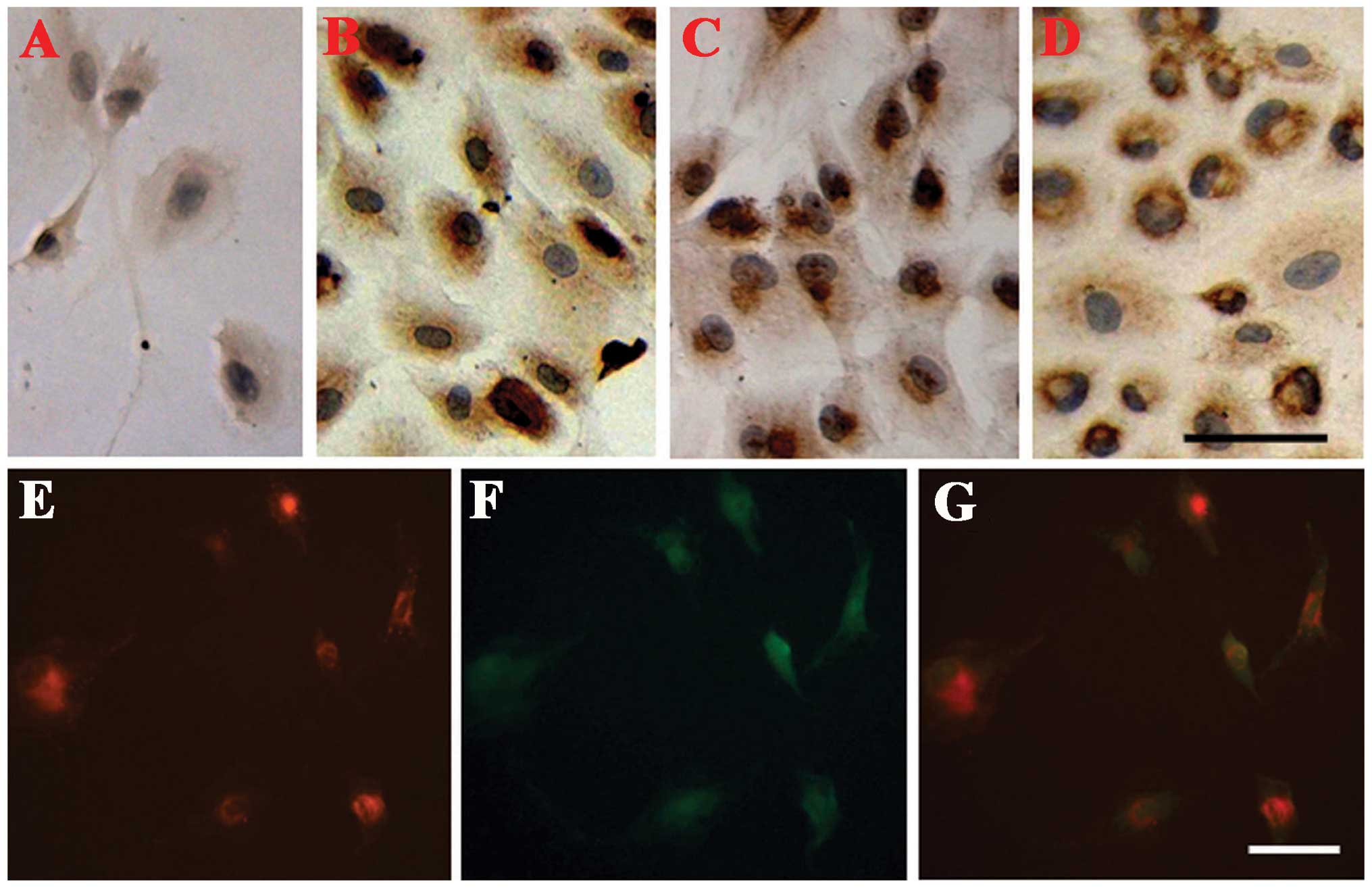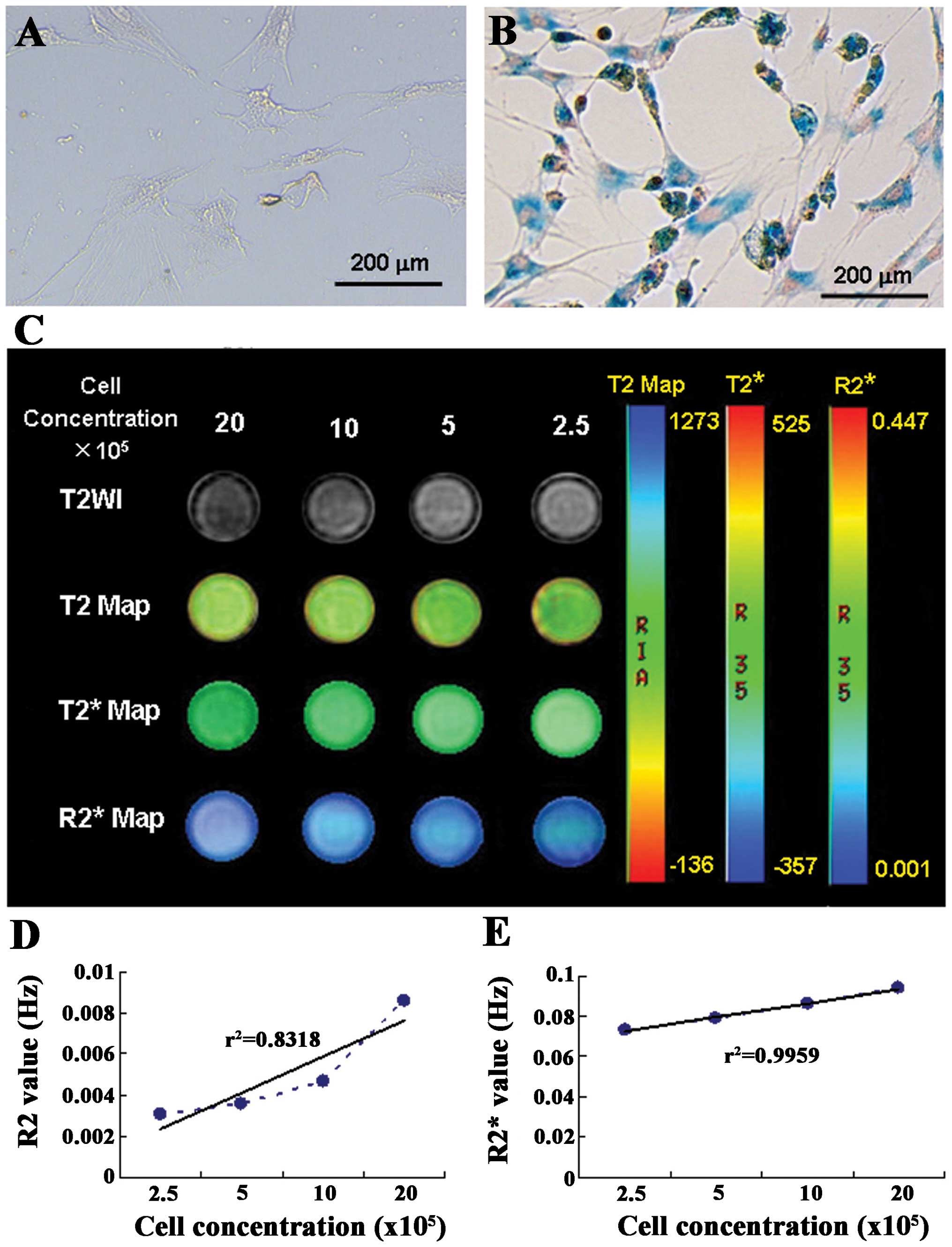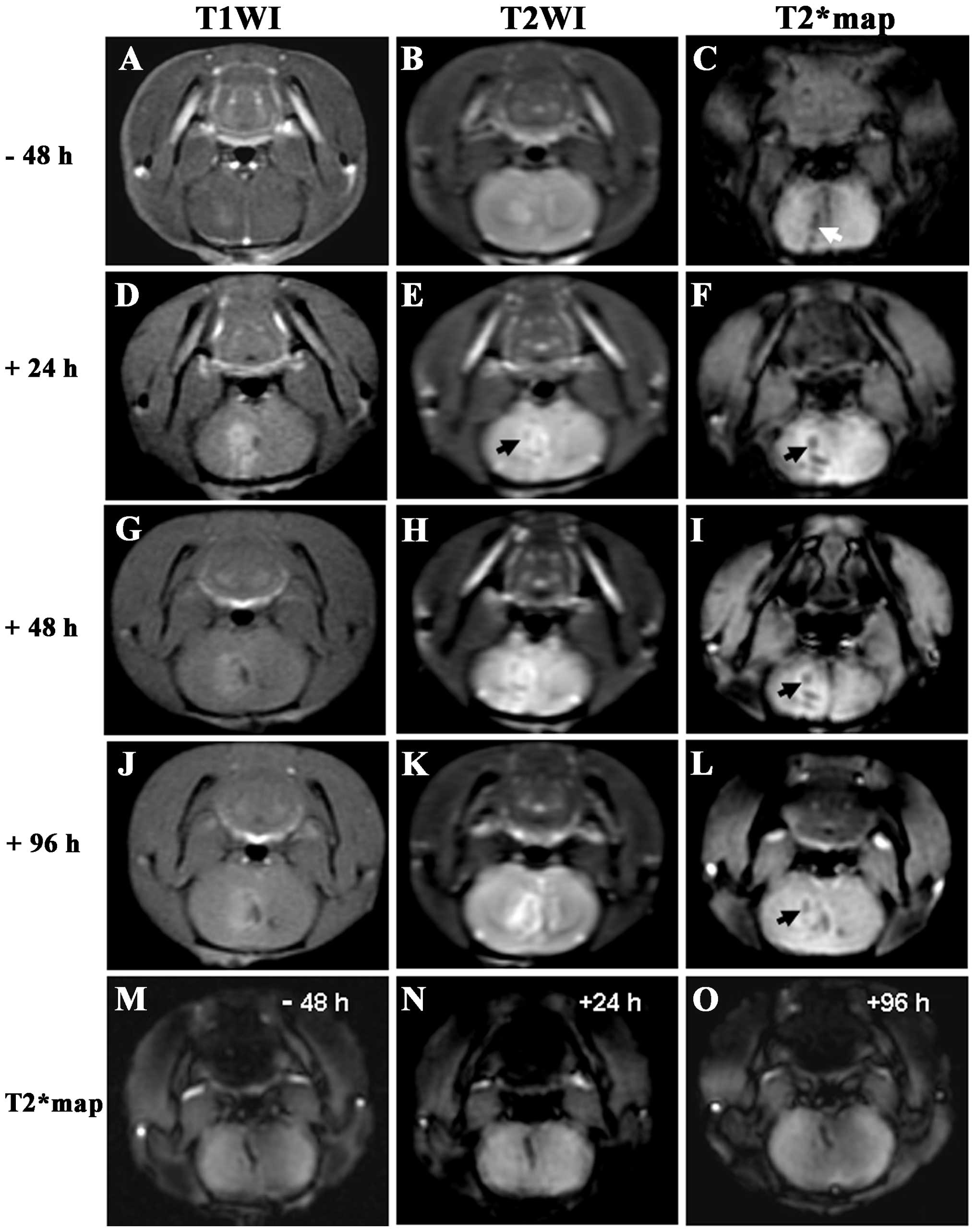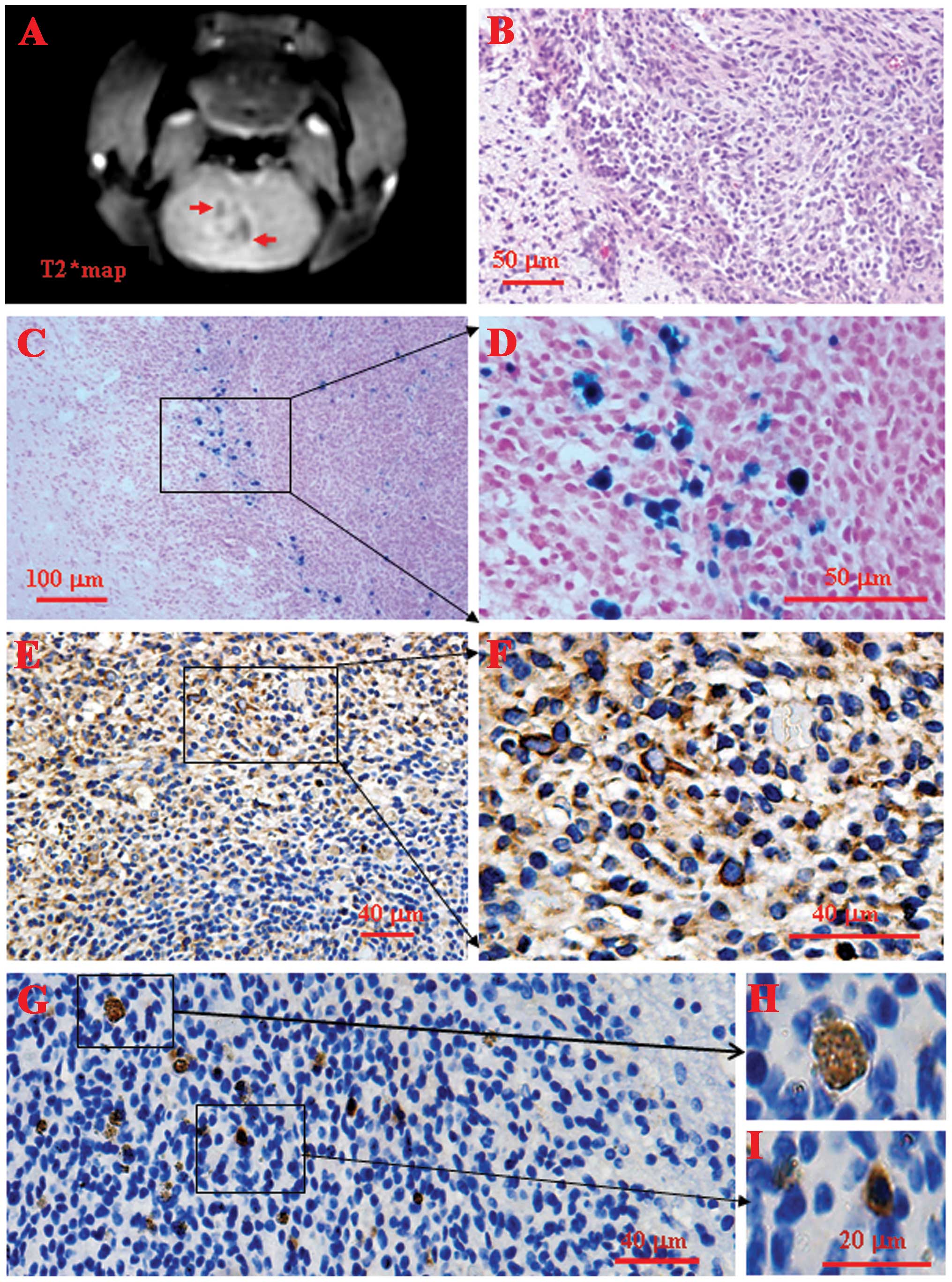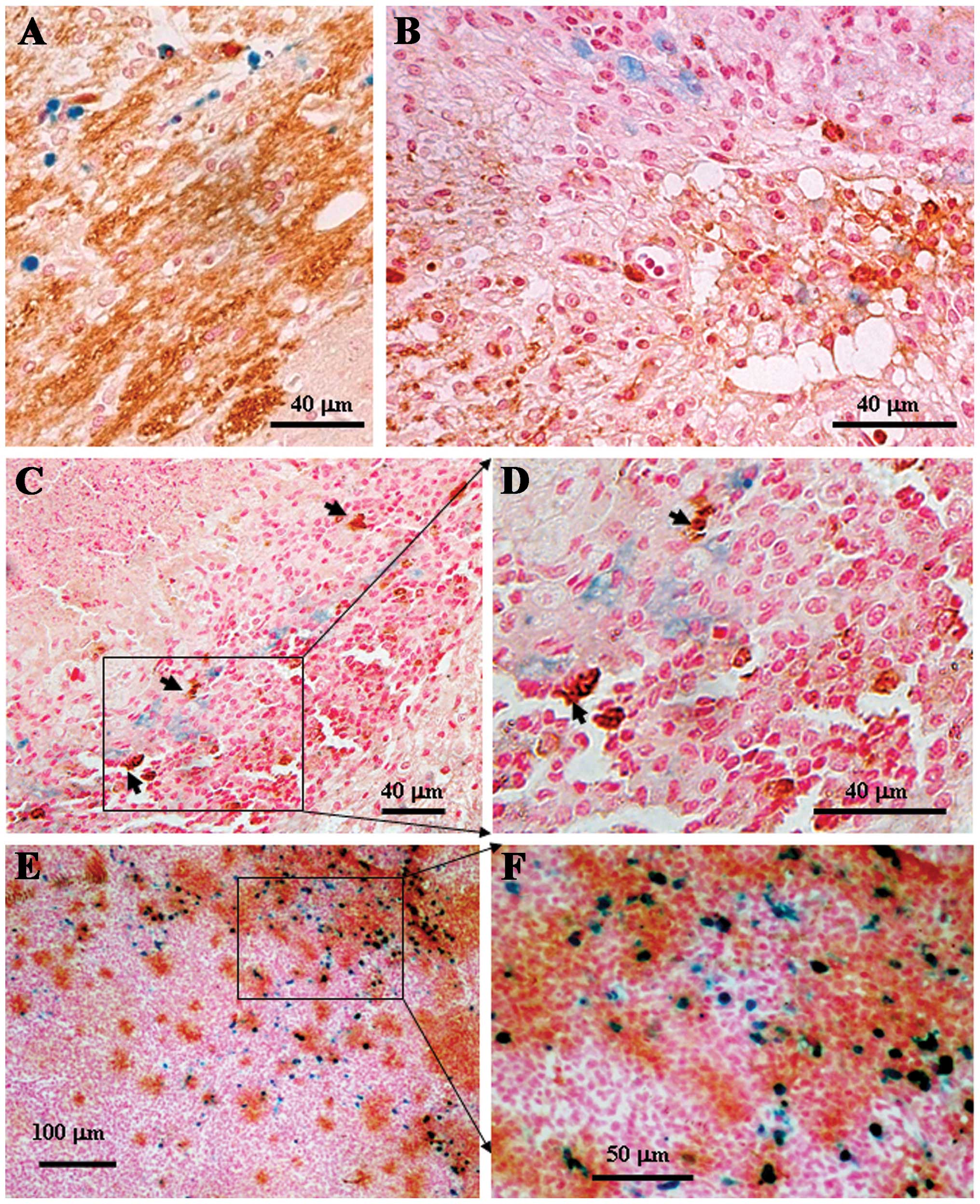|
1
|
Asahara T, Murohara T, Sullivan A, Silver
M, van der Zee R, Li T, Witzenbichler B, Schatteman G and Isner JM:
Isolation of putative progenitor endothelial cells for
angiogenesis. Science. 275:964–967. 1997. View Article : Google Scholar : PubMed/NCBI
|
|
2
|
Reyes M, Dudek A, Jahagirdar B, Koodie L,
Marker PH and Verfaillie CM: Origin of endothelial progenitors in
human postnatal bone marrow. J Clin Invest. 109:337–346. 2002.
View Article : Google Scholar : PubMed/NCBI
|
|
3
|
Eggermann J, Kliche S, Jarmy G, Hoffmann
K, Mayr-Beyrle U, Debatin KM, Waltenberger J and Beltinger C:
Endothelial progenitor cell culture and differentiation in vitro: a
methodological comparison using human umbilical cord blood.
Cardiovasc Res. 58:478–486. 2003. View Article : Google Scholar : PubMed/NCBI
|
|
4
|
Fan CL, Li Y, Gao PJ, Liu JJ, Zhang XJ and
Zhu DL: Differentiation of endothelial progenitor cells from human
umbilical cord blood CD 34+ cells in vitro. Acta
Pharmacol Sin. 24:212–218. 2003.PubMed/NCBI
|
|
5
|
Wu KH, Zhou B, Lu SH, Feng B, Yang SG, Du
WT, Gu DS, Han ZC and Liu YL: In vitro and in vivo differentiation
of human umbilical cord derived stem cells into endothelial cells.
J Cell Biochem. 100:608–616. 2007. View Article : Google Scholar : PubMed/NCBI
|
|
6
|
Muta M, Matsumoto G, Hiruma K, Saji S,
Nakashima E and Toi M: Impact of vasculogenesis on solid tumor
growth in a rat model. Oncol Rep. 10:1213–1218. 2003.PubMed/NCBI
|
|
7
|
Sho E, Sho M, Nanjo H, Kawamura K, Masuda
H and Dalman RL: Hemodynamic regulation of CD34+ cell
localization and differentiation in experimental aneurysms.
Arterioscler Thromb Vasc Biol. 24:1916–1921. 2004.PubMed/NCBI
|
|
8
|
Anderson SA, Glod J, Arbad AS, Noel M,
Ashari P, Fine HA and Frank JA: Noninvasive MR imaging magnetically
labeled stem cells to directly identify neovasculature in a glioma
model. Blood. 105:420–425. 2005. View Article : Google Scholar : PubMed/NCBI
|
|
9
|
Arbab AS, Pandit SD, Anderson SA, Yocum
GT, Bur M, Frenkel V, Khuu HM, Read EJ and Frank JA: Magnetic
resonance imaging and confocal microscopy studies of magnetically
labeled endothelial progenitor cells trafficking to sites of tumor
angiogenesis. Stem Cells. 24:671–678. 2006. View Article : Google Scholar
|
|
10
|
Wassmann S, Werner N, Czech T and Nickenig
G: Improvement of endothelial function by systemic transfusion of
vascular progenitor cells. Circ Res. 99:e74–e83. 2006. View Article : Google Scholar : PubMed/NCBI
|
|
11
|
Laing AJ, Dillon JP, Condon ET, Street JT,
Wang JH, McGuinness AJ and Redmond HP: Mobilization of endothelial
precursor cells: systemic vascular response to musculoskeletal
trauma. J Orthop Res. 25:44–50. 2007. View Article : Google Scholar : PubMed/NCBI
|
|
12
|
Szmitko PE, Fedak PW, Weisel RD, Stewart
DJ, Kutryk MJ and Verma S: Endothelial progenitor cells: new hope
for a broken heart. Circulation. 107:3093–3100. 2003. View Article : Google Scholar : PubMed/NCBI
|
|
13
|
Lyden D, Hattori K, Dias S, Costa C,
Blaikie P, et al: Impaired recruitment of bone-marrow derived
endothelial and haematopoietic precursor cells blocks tumor
angiogenesis and growth. Nat Med. 7:1194–1201. 2001. View Article : Google Scholar : PubMed/NCBI
|
|
14
|
Rafii S, Lyden D, Benezra R, Hattori K and
Heissig B: Vascular and haematopoietic stem cells: Novel targets
for anti-angiogenesis therapy? Nat Rev Cancer. 2:826–835. 2002.
View Article : Google Scholar : PubMed/NCBI
|
|
15
|
Rafat N, Beck GCh, Schulte J, Tuettenberg
J and Vajkoczy P: Circulating endothelial progenitor cells in
malignant gliomas. J Neurosurg. 112:43–49. 2010. View Article : Google Scholar : PubMed/NCBI
|
|
16
|
Varma NR, Janic B, Iskander AS, Shankar A,
Bhuiyan MP, Soltanian-Zadeh H, Jiang Q, Barton K, Ali MM and Arbab
AS: Endothelial progenitor cells (EPCs) as gene carrier system for
rat model of human glioma. PLoS One. 7:e303102012. View Article : Google Scholar : PubMed/NCBI
|
|
17
|
Corsini E, Ciusani E, Gaviani P, Silvani
A, Canazza A, Bernardi G, Calatozzolo C, DiMeco F and Salmaggi A:
Decrease in circulating endothelial progenitor cells in treated
glioma patients. J Neurooncol. 108:123–129. 2012. View Article : Google Scholar : PubMed/NCBI
|
|
18
|
Soda Y, Marumoto T, Friedmann-Morvinski D,
Soda M, Liu F, Michiue H, Pastorino S, Yang M, Hoffman RM, Kesari S
and Verma IM: Transdifferentiation of glioblastoma cells into
vascular endothelial cells. Proc Natl Acad Sci USA. 108:4274–4280.
2011. View Article : Google Scholar : PubMed/NCBI
|
|
19
|
Neri M, Maderna C, Cavazzin C,
Deidda-Vigoriti V, Politi LS, Scotti G, Marzola P, Sbarbati A,
Vescovi AL and Gritti A: Efficient in vitro labeling of human
neural precursor cells with superparamagnetic iron oxide particles:
relevance for in vivo cell tracking. Stem Cells. 26:505–516. 2008.
View Article : Google Scholar : PubMed/NCBI
|
|
20
|
Hristov M, Erl W and Weber PC: Endothelial
progenitor cells: isolation and characterization. Trends Cardiovasc
Med. 13:201–206. 2003. View Article : Google Scholar : PubMed/NCBI
|
|
21
|
Yoder MC, Mead LE, Prater D, Krier TR,
Mroueh KN, Li F, Krasich R, Temm CJ, Prchal JT and Ingram DA:
Redefining endothelial progenitor cells via clonal analysis and
hematopoietic stem/progenitor cell principals. Blood.
109:1801–1809. 2007. View Article : Google Scholar : PubMed/NCBI
|
|
22
|
Arbab AS, Janic B, Knight RA, Anderson SA,
Pawelczyk E, Rad AM, Read EJ, Pandit SD and Frank JA: Detection of
migration of locally implanted AC133+ stem cells by
cellular magnetic resonance imaging with histological findings.
FASEB J. 22:3234–3246. 2008.PubMed/NCBI
|
|
23
|
Povsic TJ, Zavodni KL, Vainorius E,
Kherani JF, Goldschmidt-Clermont PJ and Peterson ED: Common
endothelial progenitor cell assays identify discrete endothelial
progenitor cell populations. Am Heart J. 157:335–344. 2009.
View Article : Google Scholar : PubMed/NCBI
|
|
24
|
Li C, Guo B, Wilson PB, Stewart A, Byrne
G, Bundred N and Kumar S: Plasma levels of soluble CD105 correlate
with metastasis in patients with breast cancer. Int J Cancer.
89:122–126. 2000. View Article : Google Scholar : PubMed/NCBI
|
|
25
|
Zheng PP, van der Weiden M, van der Spek
PJ, Vincent AJ and Kros JM: Intratumoral, not circulating,
endothelial progenitor cells share genetic aberrations with glial
tumor cells. J Cell Physiol. 228:1383–1390. 2013. View Article : Google Scholar : PubMed/NCBI
|
|
26
|
Janic B, Jafari-Khouzani K,
Babajani-Feremi A, Iskander AS, Varma NR, Ali MM, Knight RA and
Arbab AS: MRI tracking of FePro labeled fresh and cryopreserved
long term in vitro expanded human cord blood AC133+
endothelial progenitor cells in rat glioma. PLoS One. 7:e375772012.
View Article : Google Scholar : PubMed/NCBI
|
|
27
|
Chaumeil MM, Gini B, Yang H, Iwanami A,
Sukumar S, Ozawa T, Pieper RO, Mischel PS, James CD, Berger MS and
Ronen SM: Longitudinal evaluation of MPIO-labeled stem cell
biodistribution in glioblastoma using high resolution and
contrast-enhanced MR imaging at 14.1 Tesla. Neuro Oncol.
14:1050–1061. 2012. View Article : Google Scholar : PubMed/NCBI
|
|
28
|
Varma NR, Shankar A, Iskander A, Janic B,
Borin TF, Ali MM and Arbab AS: Differential biodistribution of
intravenously administered endothelial progenitor and cytotoxic
T-cells in rat bearing orthotopic human glioma. BMC Med Imaging.
13:172013. View Article : Google Scholar
|















